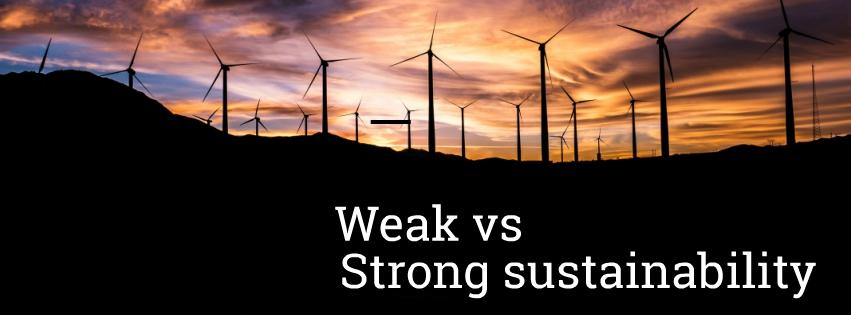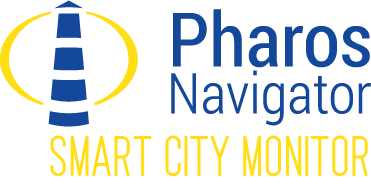Strong Sustainability vs. Weak Sustainability

There are many definitions of sustainability; one of them defines it as “meeting the needs of the present without compromising the ability of future generation to meet their own needs”. The problem "How to deal with the present and the future needs" depends on perspective on the sustainable development: Weak or Strong.
Weak Sustainability
Weak sustainability is built on the neoclassical economic approach, which perceives the natural resources as superabundant or substitutable by another kind of capital. Weak sustainability also considers the economic system as a closed and isolated system that can grow infinitely.
The natural capital can be substitutable by other capital forms, and the environmental degradation can be compensated with other economic activities. In this sense, the CO2 market, for example, the degradation resulting from the gas emissions can be compensated by payments and that is sufficient to mitigate the global warming, promote the green revolution and continue with the global economic agenda.
The proponents of weak sustainability are called as well as the technical optimistics. They postulate that future generations will have best technologies, more information and more capital available to address their environmental problems, so, we do not have to invest too much effort today to avoid such unknown problems.
Strong Sustainability
The other perspective is about strong sustainability. The proponents of this approach are not against about weak sustainability. They recognise weak sustainability as an essential first step in the right direction, but only one step is insufficient. It is about intergenerational equity and justice.
Why can the future generations not solve their problems? Because as we all already know, future conditions depend on the present generation actions. Today, the global economic activities have reached a scale that is big enough to undermine the welfare of the future generations. Some scientific studies point the long-term and the irreversible effects of environmental pollution. Some of them say that we are living in the age of the sixth mass extinction caused by human activities: the Anthropocene.
Strong sustainability postulates that there are some critical natural capital resources and services, that are non-substitutable through other forms of capital and such resources and services must be preserved, for example, the ozone layer and the biological diversity.
When strong sustainability mentions ‘must be preserved ‘, it indicates that it is not necessary to preserve the nature as it is, but it is essential to minimise irreversible natural capital losses and attempt to avoid some catastrophic consequences that we still ignore. It is challenging to determine exactly what are going to be such future implications of the environmental degradation caused today. But such consequences may include extreme weather events and significant losses of biodiversity, attempting against some forms of natural capital that provide some basic life-support functions.
Conclusion
The main difference between strong sustainability and weak sustainability is about the value of nature for the human civilization. There is a dilemma between the infinitely economic growth and the finitude of the planet Earth. It is a fact that a significant quantity of the activities and policies labelled as “sustainable” can be classified as weak sustainability. However, let’s be optimistic about the possibilities of incremental improvement of them, it can lead towards more sustainable societies.
Smart City Monitor as one of the PharosN applications offers an advanced practical solution for the local and regional governnace that allows transparency of ongoing complex processes and actual evidence-based continuous calculation of the holistic sustainability status both in real time and in the predictable future. It achieves these challenging objectives by using an open model of the target urban system as Big Cyber-Physical System of Systems linked to a large number of diverse data sources representing actual processes that take place in physical and virtual worlds.
(Contributor: Andres F. R. Torres)
You can read more about the subject on the SUSTAINABLE DEVELOPMENT KNOWLEDGE PLATFORM.
Smart Sustainable Urban Model of the real city as complex cyber-physical system
2025 © GOLEM IMS GMBH, Austria. ALL Rights Reserved.
Terms of Service |
Privacy Policy
Made in Austria

